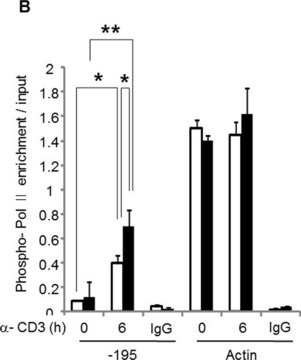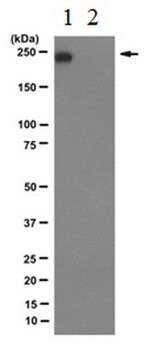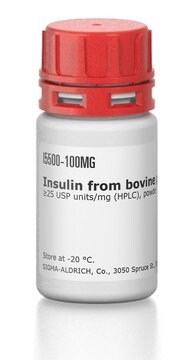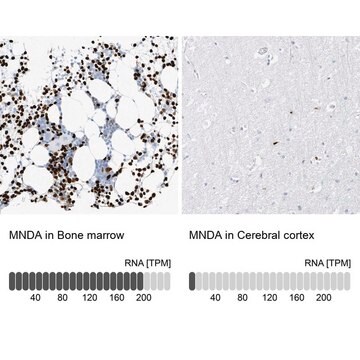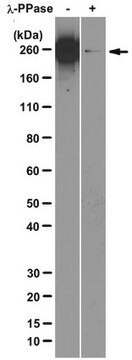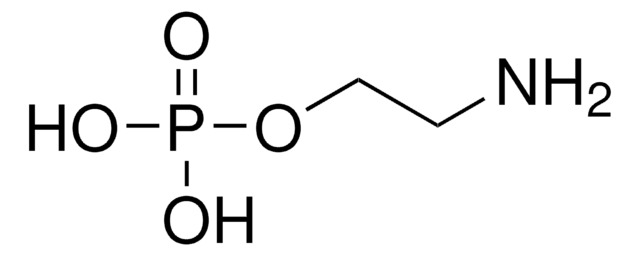Wichtige Dokumente
SAB4200637
Monoclonal Anti-phospho-RNA polymerase II CTD (pSer2) antibody produced in rat
clone 3E7C7, purified from hybridoma cell culture
Synonym(e):
POLR2, POLRA, RPB1, RPBh1, RPO2, RPOL2, RpIILS, hRPB220, hsRPB1, polymerase (RNA) II (DNA directed) polypeptide A 220kDa (POLR2A)
About This Item
Empfohlene Produkte
Biologische Quelle
rat
Qualitätsniveau
Antikörperform
purified immunoglobulin
Antikörper-Produkttyp
primary antibodies
Klon
3E7C7, monoclonal
Mol-Gew.
~250 kDa
Speziesreaktivität
rat, canine, mouse, human, monkey
Konzentration
~1 mg/mL
Methode(n)
flow cytometry: 10 μg/test using using HeLa cells.
immunoblotting: 0.25-0.5 μg/mL using whole extracts of HeLa cells.
immunofluorescence: 4-8 μg/mL using using A549 cells
Isotyp
IgG2a
UniProt-Hinterlegungsnummer
Versandbedingung
dry ice
Lagertemp.
−20°C
Posttranslationale Modifikation Target
phosphorylation (pSer2)
Angaben zum Gen
human ... POLR2A(5430)
Allgemeine Beschreibung
Spezifität
Immunogen
Anwendung
- immunoblotting
- immunofluorescence
- flow cytometry
Biochem./physiol. Wirkung
Physikalische Form
Lagerung und Haltbarkeit
Haftungsausschluss
Sie haben nicht das passende Produkt gefunden?
Probieren Sie unser Produkt-Auswahlhilfe. aus.
Lagerklassenschlüssel
10 - Combustible liquids
WGK
WGK 1
Flammpunkt (°F)
Not applicable
Flammpunkt (°C)
Not applicable
Hier finden Sie alle aktuellen Versionen:
Analysenzertifikate (COA)
Die passende Version wird nicht angezeigt?
Wenn Sie eine bestimmte Version benötigen, können Sie anhand der Lot- oder Chargennummer nach einem spezifischen Zertifikat suchen.
Besitzen Sie dieses Produkt bereits?
In der Dokumentenbibliothek finden Sie die Dokumentation zu den Produkten, die Sie kürzlich erworben haben.
Unser Team von Wissenschaftlern verfügt über Erfahrung in allen Forschungsbereichen einschließlich Life Science, Materialwissenschaften, chemischer Synthese, Chromatographie, Analytik und vielen mehr..
Setzen Sie sich mit dem technischen Dienst in Verbindung.

